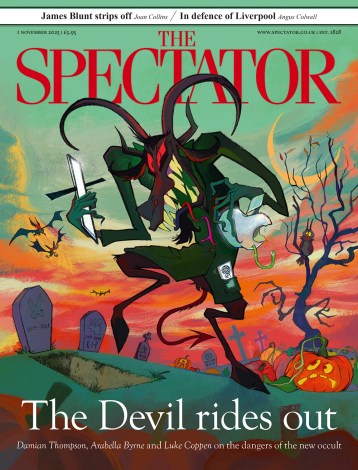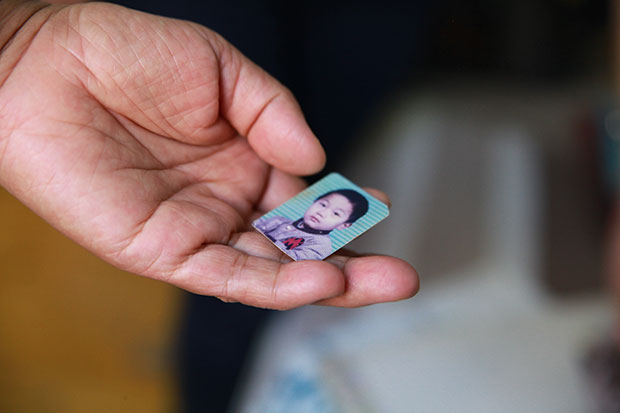Mei Fong tells the routine story of a girl who managed to conceal an illegal pregnancy until the baby was almost due, when family planning officials surrounded her hiding place at night. ‘She ran and ran and ran until she came to a pond. Then she ran in, until the water was at her neck. She stood there and began to cry.’
Through her tears she explained that she needed the baby to stop her husband and his parents abusing her for not producing a son. This was the mid 1990s, but the same thing could have happened in rural China at any point in the past 1,000 years, except for the dénouement. Officials dragged the girl from the water, and hauled her off to hospital where the baby was killed. Even if it had been a boy, the only way the family could have kept him would have been by paying a fine of between two and ten times their annual income.
If it was a girl, she would have been strangled at birth in the traditional way. Mei Fong herself was born in Malaysia to Chinese parents who already had four unwanted daughters. ‘Be glad you’re not in the old country,’ her family told her as a child: ‘You’d never have been born.’ Sons are essential to carry on the family name as well as to support ageing parents, and bury them when they die. Infanticide, always a standard solution to the problem of surplus girls, meant that the one-child policy was skewed by gender imbalance from the moment it became law in 1980.
It originated with military planners specialising in rocket science, the only body of government technical advisers to survive Mao’s purges intact. Their recommendation appealed precisely because its drastic simplicity took no account of human behaviour or feelings: ‘The country had been so beaten and demoralised, its intellectual capital so sapped by the Cultural Revolution, the idea of rationing children, in the same way as coal and grain were rationed, made sense.’
But a decision at the highest level that seemed scientifically incontrovertible caused havoc among ordinary people, most of them still living in the countryside. Wives like the girl in the pond, and husbands who saw sons as their prime source of self-esteem, found themselves caught between two opposed and implacable systems as the imperatives of China’s ancient family-based social structure were brutally dismantled by the new rules.
Legally prevented from marrying until they were 20, girls were traditionally considered too old for marriage by 25. The law further stipulated that no mother should give birth before the age of 24, not always easy to arrange, especially for those whose reproductive systems had already been damaged by multiple abortions. Women were subjected to regular pregnancy checks, sometimes as often as every other week, and forbidden to travel without a certificate guaranteeing they were not pregnant.
Birth control spies, one to every ten households in even the tiniest village, could call on teams of young men to enforce late-term abortions, oversee sterilisation and extort payment for illicit children by threats, raids, arrests, the imprisonment of relatives (usually elderly parents), and the confiscation of household goods. ‘Sometimes we would climb up the roofs,’ an administrator told Mei Fong, ‘and make a hole, to show we meant business.’ Wages depended on quotas being met.
The policy worked if anything too well. Rapid economic expansion owed much to a predominantly male workforce, but a corresponding shortage of women meant that a high proportion of men had no realistic prospect of finding a mate. Women imported to fill the gap were commonly kidnapped and trafficked from neighbouring Asian countries. Up to 100,000 North Korean refugees (who face death in their own country if they attempt to return) are thought to be mainly women, sold to sex-starved Chinese men for $1500 a head.
Factories making full-sized sex dolls provide an alternative. The costliest are life-like imitations of soft-porn stars with real human hair and eyelashes as well as virtually indestructible nipples. The author sees these dolls as both cause and symptom of an increasingly hostile objectification of women by lonely, alienated men brought up with little or no first-hand experience of the opposite sex.
Any hope of securing a bride, even supposing a prospective husband could find one, depends on how much he and his parents are able to pay for her, and whether or not he has managed to acquire a home for her to live in. One young man whose parents had bankrupted themselves to buy him a practically empty flat, with a mortgage currently swallowing 80 per cent of their combined monthly income, found it hard to visualise the kind of wife who might be induced to live in it. ‘She must obey my parents,’ was all he could say, adding after much thought, ‘and obey me.’
The current situation seems at any rate in theory an almost fairytale reversal; ‘poetic justice’ as Mei Fong points out — ‘payback for hundreds of years of systemic discrimination.’ Anyone who has talked to the current generation of educated, independent young urban women in China will know that, for them, the one-child policy represents liberation and unbridled opportunity. Freed for the first time in history from the repetitive drudgery of child-bearing and rearing, they see the future as theirs.
But confidence, autonomy and earning power are not necessarily plus points when it comes to marriage. ‘You don’t want a wife who is smarter than you, and earning more than you,’ said Lee Kuan Yew, the prime minister of Singapore, explaining what went wrong when his country experimented in the 1990s with equal education and jobs for women. In the past decade Confucian workshops, set up to teach women how to boost male egos by practising deference and obedience, have become increasingly popular all over China.
The Chinese government has already made tentative, not entirely successful attempts to modify a policy beginning to produce unforeseen consequences. A steep, artificially induced decline in the birth-rate coincided with the increased longevity brought about by modern medical advances. By 2020 there will be 30 to 40 million superfluous Chinese men — as many as the entire population of Canada.
The possibility of disturbing side effects was publicly raised at the time by only one man, an insignificant economics instructor called Liang Zhongtang, who pointed out that, where China currently has five working adults to every pensioner, the ratio would inevitably shift to something more like two adults struggling to support one child and four elderly parents. Ten million more people will retire each year while the workforce shrinks annually by seven million.
The kind of transition that occurred over half a century in the West will overtake China quite suddenly in about 15 years, when one in four of the population will be an unskilled worker with no future, no children and little or no pension provision. The response of those involved is hard to foresee. All that can be said for sure is that, as Mei Fong makes clear in her gripping, balanced and well-documented book, this unprecedented demographic explosion will produce a powerful impact not only on China, but on the rest of the world.






Comments